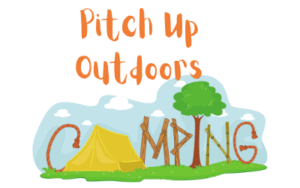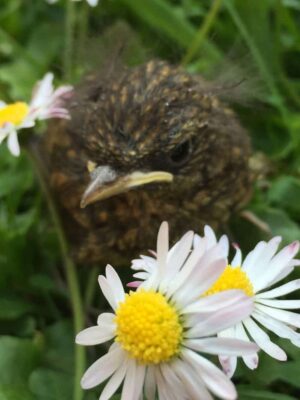This post contains affiliate links.
Campervan trips allow us to explore the great outdoors and immerse ourselves in nature’s wonders. One aspect of these adventures is wildlife safety. It’s crucial to interact responsibly with animals, respecting their habitats and minimising our impact on their well-being.
How can we enjoy nature and interact with animals responsibly without stressing or harming them?
Observe quietly and calmly by interacting responsibly with wildlife during campervan trips. It is essential for the safety of animals and humans. We can minimise the impact on their well-being by maintaining a respectful distance, avoiding interference with their natural behaviours, and securing our campsites and food.
It’s important to minimise the impact we have on their environment. Here are a few tips on how you can respect and help the natural inhabitants.
Tips on how to protect wildlife and keep safe
We are lucky in the UK that we do not have many dangerous animals. However, we must ensure we respect any type of animal and protect its environment as we are the visitors.
- Research first before you visit – If you are visiting an area that you have never been to before, whether in the UK or overseas, you must research thoroughly before visiting. Research the different types of wildlife, behaviours, habits and potential risks to yourself. Understanding the wildlife will help you make informed decisions and ensure the safety of all.
- Keep your distances – Be respectful when encountering wild animals and maintain a safe and respectful distance. Be aware that you may disturb or disrupt their natural behaviour if you go too close. Also, understand the mating season as the wildlife will protect their young. It will make them more aggressive than usual. If you want to observe, use either a camera with zoom capabilities or binoculars.
- Do not feed or leave food laying around – Not all human food is suitable for wildlife. Human food can harm wild animals’ health and disrupt their natural foraging or hunting behaviours. Wildlife mustn’t be continuously fed as this will also encourage them to approach humans and be more dependent. Keep at a distance, remove any food, and allow them to follow their natural diet.
- Watch quietly and calmly – When near wildlife, remain quiet and calm. Loud noises, sudden movements, or getting too close can startle and distress the animals. Potentially leading to aggressive behaviour or causing them to flee. Keep noise to a minimum, avoid sudden gestures, and be patient while observing wildlife in their natural environment.
- Leave nesting birds alone – It can be very tempting to approach a bird’s nest just to look, thinking it will not harm them. If you go near a nest and the mother bird is sitting on it, she will fly away and may not return until she feels it is safe. Keep a safe distance and use binoculars or camera lenses to observe them without intruding on their activities.
- Be aware of breeding grounds – during certain times of the year, animals will be breeding. Respect their environment and nature, keep your distance, and do not disturb their area. There may be warning signs around, especially if they are protected wildlife.
- Safe animals walkways – In some areas, there are designated protected places or wildlife crossings to ensure the safety and conservation of animals. Respect these areas by adhering to signs and regulations. Staying on marked trails and avoiding venturing into restricted zones. These measures not only protect wildlife but also contribute to the preservation of their habitats. You will find wildlife is protected at nature reserves, national parks and marine reserves.
- Do not approach or touch animals – It is important not to touch any animals, which includes farm animals in fields. No matter how cute or docile an animal may appear, it’s vital to remember that they are wild or farm animals, not pets. Never approach or attempt to touch them, as this can be dangerous for both parties. Respect their space and allow them to maintain their natural behaviours without human interference.
- Be careful of roadside wildlife – When driving your campervan, be cautious of roadside wildlife. This can be rabbits, deer, badgers or squirrels. If you are near a waterway, ducks will often cross the road with the ducklings. Drive slowly, stop if needed, and wait until it is safe for the animal. A main area where you need to be extra cautious is the New Forest. Often, horses or donkeys will cross or be walking along the roadside. If you encounter wildlife on the road, maintain a safe distance and give them space to move away.
Not only is it important to understand the effects of respecting wildlife whilst you are exploring in your campervan it is crucial to be aware of keeping you and your family safe. Not only from potential threats from wildlife but also having the correct safety gear with you is important. You must have some type of roadside recovery, warning triangles, and protective clothing for you and your family. You cannot stay in the vehicle, especially if you are on a motorway. If you want to find out more about how to keep you and your family safe in case of a breakdown, check out our article on Stay one step ahead with campervan safety essentials
Related questions
What type of dangerous animals do we have in the UK?
We do not have many dangerous animals, but there are a few that you need to be cautious of and be aware of the areas you may find them.
- Adders – This is one of the UK venomous snakes and can be found in grassland, heath and woodlands. A bite from an adder is rare and will require medical treatment immediately. They will most probably be more scared of you. However, be cautious if you have your dog with you.
- Hornets – Hornets can be very painful if they sting. They will only harm you if you disturb their nest. You will normally find a hornet’s nest in trees, shrubs, buildings and structures. If you are exploring a wooded area, you may find a hornet’s nets inside a hollow trunk. Di not disturb and keep your distance.
- False widow spider – They are normally found down south in urban areas rather than rural areas. However, even though their bite is not dangerous, there can be an allergic reaction depending on the individual. If the bite becomes painful, swelling and redness in the area.
- Seagulls – Normally found in seaside areas and can become aggressive, especially during the breeding season. They are also known to swoop and snatch food for people, so it is advised not to feed them and be cautious.
- Cattle – Cows can be aggressive if they become scared and agitated. Especially if they feel their calves are in danger. There have been incidents involving aggressive cattle, although relatively rare. Exercising caution and being aware of the potential risks when interacting with them is important.
It’s important to remember that these animals generally pose little threat to human safety if they are left undisturbed and approached with respect. It’s recommended to observe wildlife from a safe distance, avoid provoking or threatening them, and follow any guidance or warnings provided by local authorities or wildlife experts.


